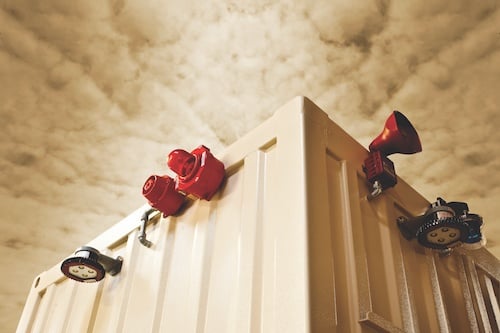Safety & Regulations | Design & Engineering
Why Is Steel Safer Than Concrete?


Are you a Facility Manager or Superintendent in the Human Factors Engineering (HFE), Oil and Gas, or Petrochemical industry? If so, then you know providing the optimal blast-resistant building is a necessity to guarantee your team's safety in the event of an explosion on-site.
The building you choose must be well-tested and follow the American Petroleum Institute (API) recommended guidelines. You should consider safety during an explosion in order to limit the liability of workers during the construction of the facility itself. This can be achieved by selecting a modular-style blast-resistant building constructed in phases offsite and then quickly installed by a small staff. Using modular steel blast-resistant buildings decreases both risk and interruption on your facility.
The two main options for building materials of a blast-resistant building are either steel or concrete. With everything mentioned above regarding safety considerations, steel is the most viable solution of the two, and we greatly recommend it for your own facility. Steel has major advantages over concrete when constructing blast-resistant buildings, which we’ll explore below.
These are four main benefits steel provides over concrete when constructing blast resistant buildings.
Material Strength
To begin, steel has a much higher strength-to-weight ratio and is eight times stronger than concrete. Steel has tensile strength and shear unrivaled by any material used in construction. Its tensile strength ranges from 58,000 psi to as high as 435,000 psi. The material remains strong during tension and compression and also bends without cracking or breaking.
The same cannot be said of concrete. Cured concrete is strong, but it is rigid, adds excessive weight to a building, and cracks under tension. A cracked concrete wall due to a blast wave is costly and time-consuming to repair.
Design Capabilities
The strength and lighter nature of steel offer expanded design possibilities. You can have column-free spaces and long open spans, thus increasing the usable floor space. Moreover, the steel frame can be adapted and modified for new uses.
On the other hand, concrete has design limitations. Columns are a necessary design component, and once the building is constructed, the owner cannot modify it without major demolitions.
Energy Absorption
Concrete is a rigid material, which is its Achilles’ heel. When dealing with blasts and explosions, rigidity becomes a weakness. Blast-resistant steel absorbs the impact and bends or moves slightly. Steel walls are said to "flex" in response to a blast wave.
Due to this ductility, steel absorbs energy well during a blast. These qualities make it the ideal material to construct a blast-resistant building.
Test Data
RedGuard has gone out of its way to test the effectiveness of steel during blasts. We constructed a blast-resistant building using our SafetySuite technology and equipped it with a desk, computer, and test dummy to simulate a real work environment. On August 11, 2020, one arena-style blast test was conducted. Among the RedGuard units, there was notable non-structural damage to the flooring and interior finishing work, and the global movement of the structure was minimal.
Interested in learning more? Check out our Steel vs. Concrete Head-To-Head Comparison.
RedGuard Sales & Marketing
The RedGuard sales and marketing team curates and writes on a variety of topics regarding blast-resistance and modular buildings. To inquire about any of the topics you read about on our blog, connect with us.


